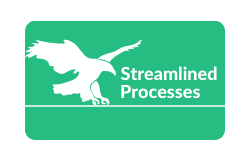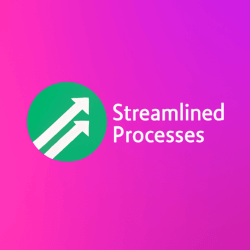For Saas Solutions For Freelancers, see our main page here.
Why Freelancers Need Specialized SaaS Tools
Freelancers juggle multiple roles—accountant, marketer, project manager, and customer support. As a result, they need tools that simplify their workflow and reduce admin time. That’s where SaaS solutions shine. Designed for flexibility and scalability, these platforms offer freelancers the ability to automate, optimize, and organize their business operations without expensive overhead.
SaaS (Software as a Service) applications are cloud-based tools. They let you work from anywhere, collaborate with clients in real time, and manage essential tasks like invoicing or time tracking. So whether you’re a freelance graphic designer or a self-employed software developer, SaaS platforms can make your day-to-day much smoother.
Top Saas Solutions For Freelancers Today
Choosing the right platform depends on your niche, but some tools serve a wide range of freelance professionals. Let’s take a look at industry favorites and how they help you get more done—with less stress.
- FreshBooks: Ideal for invoicing and time tracking. It offers automatic payment reminders and integrated expense tracking.
- Notion: A versatile tool for project management, content planning, and personal knowledge bases.
- Trello: Excellent for visual task management, especially when collaborating with clients or small teams.
- Canva Pro: Freelancers in creative industries use it to design social posts, marketing assets, and client presentations quickly.
- Calendly: Takes the hassle out of scheduling meetings by syncing with your calendar and letting clients book automatically.
Many freelancers use a mix of these SaaS solutions to cover all areas of their business. Moreover, integrating them often helps create a seamless, end-to-end workflow.
Benefits of Using Saas Solutions For Freelancers
One major perk of SaaS tools is their affordability compared to traditional software licenses. You pay monthly or annually for what you use, and updates happen automatically, so you always get the latest features.
Secondly, these tools are built with user experience in mind. Therefore, they often require little to no technical know-how. In other words, you don’t need to be an IT expert to set them up or use them effectively.
Let’s break down the major benefits:
- Mobility: Access your tools anytime, anywhere—on desktop or mobile.
- Security: Most platforms provide cloud-based storage with encrypted data to protect sensitive files.
- Collaboration: Easily share documents or projects with clients across the globe.
- Efficiency: Automate repetitive tasks like billing or follow-up emails.
To sum up, SaaS platforms are more than just tools—they’re business enablers.
How to Choose the Right SaaS Tools for Freelancing
Don’t adopt technology just because it’s trending. Instead, assess your business needs and identify bottlenecks first. For example, if you spend too much time managing client communication, a tool like Slack or Zoom might offer relief.
Here are a few criteria to help guide your decision:
- Ease of Use: The tool should simplify your work, not complicate it.
- Pricing: Consider free tiers or trials before diving into premium versions.
- Integration: Your tools should talk to each other via APIs or built-in connectors.
- Support: Gauge how responsive and helpful the customer service is.
Above all, choose software that scales as you grow. That means considering tools that still serve your needs even as your workload doubles or client base increases.
Case Study: A Freelancer’s Success With SaaS
Take Sarah, a freelance content strategist. Before adopting SaaS tools, she used spreadsheets for project tracking and manual emails for invoices. It cost her hours every week. After switching to Asana for task management, QuickBooks for invoicing, and Grammarly for editing support, her productivity jumped by 30%.
She even began offering quicker turnaround times and expanding her client services. Consequently, her revenue grew by 45% year over year. This shows how SaaS solutions can directly impact your bottom line.
Common Mistakes Freelancers Make With SaaS Platforms
Even though these tools are user-friendly, there are some traps to avoid. Firstly, don’t subscribe to multiple tools with overlapping functions. This not only wastes money but also complicates your workflow.
Secondly, skipping the learning curve can prevent you from using the full range of features. For example, many freelancers use Trello just for task lists but ignore its workflow automation capabilities.
So how can you avoid these mistakes?
- Start with 1–2 core tools before expanding your tech stack.
- Invest time in tutorials or community forums to uncover advanced features.
- Audit your tool usage every quarter to eliminate what you no longer need.
Doing so ensures you keep your operation lean and effective.
Emerging Trends in Saas Solutions For Freelancers
The freelance workforce is growing. Consequently, SaaS vendors are tailoring more features to solo professionals. From client portals to AI-assisted writing tools, the future is packed with time-saving advantages.
Moreover, integration with AI is becoming a standard. Services like Jasper or Copy.ai aid content creators, while tools like Motion use AI to schedule your day for peak productivity. In the same vein, voice-command tools are beginning to reshape how freelancers interact with software.
Therefore, keep an eye on tools that leverage machine learning and automation. They not only improve efficiency but could also help you offer premium services to your clientele.
FAQ: Understanding Saas Solutions For Freelancers
Q: Are SaaS platforms secure enough for storing client data?
A: Most reputable SaaS providers use high-level encryption and regular backups. Always choose tools that comply with global security standards like GDPR.
Q: Can I manage multiple clients using a single SaaS tool?
A: Yes, platforms like Dubsado or HoneyBook are built to manage several clients—each with their own projects, contracts, and timelines.
Q: Is free software enough, or should I always go premium?
A: Free versions work well to start. However, premium versions often unlock risk-reducing features like backups, customer support, or detailed analytics.
Q: What if I’m not tech-savvy?
A: Most SaaS platforms offer tutorials, user-friendly interfaces, and customer chat—making them accessible even if you’re not a tech expert.
Final Thoughts on Using SaaS as a Freelancer
Whether you’re just starting out or scaling your freelance business, the right tools make all the difference. SaaS solutions for freelancers offer speed, flexibility, and simplicity—ingredients necessary for success in today’s digital-first world.
To clarify, SaaS tools aren’t silver bullets. They work best when aligned with your workflows, goals, and client management style. Therefore, be selective and focus on building a streamlined system tailored to your freelance journey.
This article was created with the assistance of AI tools and reviewed by our team at Streamlined Processes LLC to ensure accuracy and relevance.
Follow us on Facebook here.

